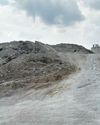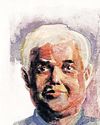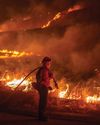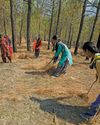
The James Webb telescope has released spectacular images of deep space. What insights do they provide?
The quality of the images is excellent. If you zoom into each image, a lot of features become visible. For instance, studying the image of Stephan's Quintet [290 million light years away from Earth], where galaxies are merging, will tell us how stars are formed and how they disturb galaxies in the process. This is important as the merging of galaxies is common. Our own Milky Way and Andromeda are moving towards each other and are expected to merge after several billion years.
The colours in the captured images tell us about the temperature. The bubble in the Southern Ring planetary nebula [2,500 light-years away] image, for instance, has red on the outside and blue on the inside, which shows the temperature distribution.
How does it synthesise the images?
The James Webb telescope (JWST) has multiple filters that capture images at different wavelengths. The individual images are in black and white. They are then combined, and colours are assigned based on the wavelength. A longer wavelength is generally assigned red, while a shorter one is assigned blue. Green falls in the middle. We can assign more colours as well when more filters are used. The colour of a region is a function of temperature.
Bu hikaye Down To Earth dergisinin August 01, 2022 sayısından alınmıştır.
Start your 7-day Magzter GOLD free trial to access thousands of curated premium stories, and 9,000+ magazines and newspapers.
Already a subscriber ? Giriş Yap
Bu hikaye Down To Earth dergisinin August 01, 2022 sayısından alınmıştır.
Start your 7-day Magzter GOLD free trial to access thousands of curated premium stories, and 9,000+ magazines and newspapers.
Already a subscriber? Giriş Yap

THE CIRCULARITY ARGUMENT
A circular economy can help India achieve its developmental aspirations while following the low-carbon pathway. It will also help address the challenges of waste management, pollution and overexploitation of natural resources. Industries are already innovating to reuse high-volume wastes and have shown that the transition can usher in both environmental and financial windfalls

Banking on flawed drug voluntary licences
The Medicines Patent Pool is pushing for more VLs, but its bad deal with Novartis on a cancer drug shows the pitfalls

Lasting solutions
For the first time, the UN has recognised the role of indigenous communities in tackling aridity. A repository of traditional knowledge India has the wherewithal to lead the way

IMD at 150
India's journey into modern weather forecasting took a decisive turn 150 years ago with the establishment of India Meteorological Department during the British rule. The agency has come a long way since then, shaping the way the country predicts and responds to its diverse climate challenges

Every drop counts
In drought-prone Marathwada region, 14 villages have managed to counter water shortage by budgeting the resource

Threat to survival
Hollongapar Gibbon Sanctuary in Assam faces ecological challenges as railway electrification and hydrocarbon exploration endanger its fragile biodiversity

'Migration is going to be a battlefield'
AMITAV GHOSH is one of the foremost chroniclers of our times. His literary sojourn includes writings on topics that range from languages to climate change to human lives. His latest book, Wild Fictions, brings some of his works on these issues under one title. In a conversation with RAJAT GHAI, Ghosh shares his views on the future of human movement. Excerpts:

Face of future
California wildfires confirm forest fires are intensifying in a hotter world, emitting substantial amounts of greenhouse gases and reinforcing global warming

Friends of the forest
Residents of 30 villages in Uttarakhand establish a model for public participation in saving forests from wildfires

Climate-crazy playbook
Just hours after his second (and final) term began on January 20, US President Donald Trump unleashed 46 presidential actions. Several of these are centred on the US' climate commitments, energy transition, migration and trade policies, and are likely to have negative global implications